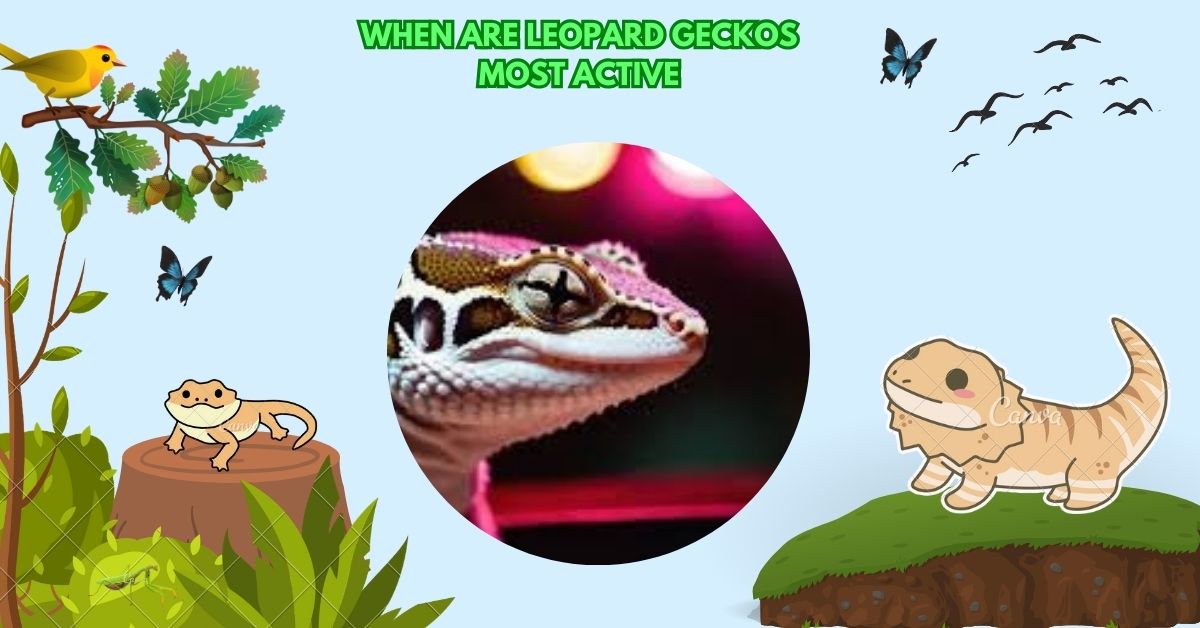Leopard geckos are popular reptiles due to their docile nature and relatively easy care requirements. However, these creatures are known for being nocturnal and shy, often spending a significant amount of time in hiding.
To get your leopard gecko to come out of hiding, ensure a comfortable environment with proper temperature, humidity, and multiple hiding spots. Gently offer food and allow it time to emerge naturally without stress.
In this guide, we’ll discuss the common reasons your leopard gecko might be hiding, how to encourage it to come out, and when to seek professional help.
Understanding Leopard Gecko Behavior
Leopard geckos are naturally solitary animals that thrive in environments where they feel secure. In the wild, they are crepuscular (active at dawn and dusk) and nocturnal, which means they are more active during the night. During the day, they seek shelter in crevices, under rocks, or in burrows to avoid the heat of the sun and potential predators. These instincts are retained even in captivity. It’s essential to understand that your leopard gecko’s hiding behavior is often a natural, self-protective mechanism, but excessive hiding can indicate something is wrong.
Common Reasons for Hiding
There are several factors that can contribute to a leopard gecko spending more time in its hide than usual. Understanding these causes can help you determine how to help your gecko feel comfortable and encourage it to be more active.
1. Environmental Stress
One of the primary reasons for excessive hiding is stress caused by environmental factors. These can include temperature fluctuations, improper lighting, or humidity levels that are too high or too low. A stressed leopard gecko may retreat to its hide more often in an attempt to feel secure.
2. Health Issues
If your leopard gecko is feeling unwell, it may hide more frequently. Illnesses or injuries can make your gecko feel vulnerable and unable to enjoy its usual activities. If you notice that your gecko is lethargic, refuses to eat, or has abnormal stool, it may be time to consult a veterinarian.
3. Improper Habitat Setup
An inadequate habitat can lead to stress and hiding. Your leopard gecko’s enclosure should be spacious enough for it to move around comfortably and should provide multiple hides. A lack of hiding spaces can make your gecko feel exposed and insecure, prompting it to stay in hiding.
4. Overhandling or Sudden Movements
Leopard geckos are sensitive creatures, and overhandling or sudden movements can cause stress. If you are constantly interacting with your gecko or disturbing its environment, it may feel threatened and retreat to its hide to escape.
5. Shedding
During the shedding process, a leopard gecko may hide more often. Shedding is a vulnerable time for these reptiles, and they prefer to complete the process undisturbed. If your gecko is hiding during shedding, it’s completely normal, but make sure the humidity levels in the enclosure are optimal to help with the process.
How to Encourage Your Leopard Gecko to Come Out of Hiding
If you want to encourage your leopard gecko to be more active and come out of hiding, there are several steps you can take. These steps address both environmental conditions and behavioral factors, ensuring your gecko feels safe and comfortable in its habitat.
1. Ensure Proper Habitat Conditions
The most important factor in encouraging your gecko to come out is ensuring its environment is comfortable and stress-free. Here’s how to achieve the optimal habitat conditions for your leopard gecko:
- Temperature: The enclosure should have a gradient of temperatures, with a warm side around 88-92°F (31-33°C) and a cool side between 75-80°F (24-27°C). This allows your gecko to regulate its body temperature.
- Humidity: Leopard geckos thrive in dry environments, so aim for humidity levels between 30-40%. Too much humidity can cause respiratory issues and stress.
- Lighting: Provide a 12-hour light/dark cycle to mimic natural conditions. UVB lighting is not required for leopard geckos, but it can help with calcium absorption and general health.
- Hides: Make sure your gecko has multiple hides in different parts of the enclosure. This provides your gecko with options and ensures it has a safe place to retreat when it feels insecure.
2. Minimize Stress
Leopard geckos are sensitive to stress, and providing a calm, quiet environment is essential for their well-being. To minimize stress:
- Place the enclosure in a quiet area away from high-traffic zones or loud noises.
- Avoid placing the enclosure near windows where external changes in light or temperature could disturb your gecko.
- Don’t overhandle your gecko, especially during the initial period of acclimatization. Let it come to you at its own pace.
3. Monitor Health
It’s important to observe your leopard gecko closely for signs of illness. A gecko that is hiding more than usual could be experiencing health issues. Some common signs of illness include:
- Loss of appetite or refusal to eat
- Lethargy or lack of activity
- Abnormal feces (diarrhea, lack of urates, etc.)
- Visible injuries or skin issues
If you notice any of these signs, it’s essential to take your gecko to a reptile veterinarian for a thorough check-up.
4. Provide Regular Feedings
Establishing a consistent feeding routine is important for your gecko’s health and can help to encourage it to come out of hiding. Geckos are opportunistic feeders, so they will often emerge when they smell food. Here are some tips to make feeding time more effective:
- Feed your gecko at the same time each day to establish a routine.
- Use tongs to offer food near the hide to encourage your gecko to come out and eat.
- Provide a variety of food options, such as crickets, mealworms, and other insects, to keep your gecko interested.
5. Ensure Proper Shedding Conditions
If your gecko is shedding, it may spend extra time in hiding to complete the process. To assist with shedding:
- Keep the humidity at around 40-50% during shedding.
- Provide a humid hide where your gecko can retreat to help soften the shed skin.
- Avoid disturbing your gecko during the shedding process, as it may cause unnecessary stress.
6. Be Patient
It’s important to allow your gecko time to adjust to its new home and environment. Don’t force your gecko to come out of hiding, as this could increase stress levels. Allow it to emerge at its own pace, and provide the proper conditions to encourage its natural behavior.
When to Seek Professional Help
If your leopard gecko is hiding excessively and showing signs of distress or illness, it’s time to consult a reptile veterinarian. A vet can perform a thorough examination to rule out any health issues and offer advice on how to improve your gecko’s care. Don’t hesitate to seek professional help if you’re concerned about your gecko’s well-being.
FAQs
How to lure a gecko out of hiding?
Place food near its hide or gently tap the enclosure. Avoid startling it, and give it time to come out naturally.
How to get a gecko out of hide?
Try offering food or gently tapping the hide. Avoid forcing the gecko out; let it come out when it feels safe.
How to get a leopard gecko to come out?
Ensure a calm environment with proper temperature and humidity. Offer food or gently interact, but let your gecko emerge when it’s ready.
Why is my leopard gecko always hiding?
It’s normal behavior. Geckos hide when they feel stressed, scared, or unwell. Make sure the temperature and environment are comfortable for them.
How do you find a hidden gecko?
Look in small, dark spaces like under furniture or behind objects. Check their usual hiding spots and gently search around the area.
Are geckos attracted to light?
Geckos are nocturnal and prefer low light. Bright lights may stress them out, so keep their environment dim during the day.
What to do if a gecko is in the room?
Stay calm. Look around quietly for the gecko in dark places. Gently coax it out with food or place a hide nearby.
Where do leopard geckos like to hide?
Leopard geckos prefer dark, secure places like caves, under rocks, or inside hides where they feel safe and protected.
How do I find my leopard gecko?
Search dark, hidden spots around the room. Look under furniture or inside small crevices. Check areas where your gecko might feel safe.
Is it OK to hold your gecko?
Yes, but handle gently and avoid stressing them out. Let your gecko adjust to your touch and hold it for short periods only.
Conclusion
Getting your leopard gecko to come out of hiding involves creating a comfortable and stress-free environment. Ensuring proper temperature, humidity, and lighting, along with offering food and multiple hides, can encourage your gecko to be more active. Remember to be patient and allow your gecko to emerge at its own pace. If excessive hiding persists or your gecko shows signs of illness, seeking professional help from a reptile veterinarian is always a good idea. With the right care and understanding, your leopard gecko will feel safe and comfortable enough to explore its surroundings.





